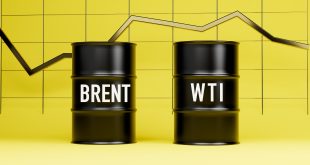The U.S. Dollar Index (DXY) is currently trading at 97.343, down 0.28% for the day. This recent decline is part of a broader weakening trend for the dollar. Over the last month, the DXY has fallen by 0.86%, and the losses are even more significant over longer periods, with the index down 5.74% in the last six months and 10.30% year-to-date. The dollar has depreciated 3.65% over the past year, marking a significant reversal from its performance over the last five years, during which it gained 4.58%. This downward pressure on the dollar has been influenced by factors such as a slowing U.S. economy, a cooling labor market, and expectations for future rate cuts by the Federal Reserve.
The global monetary policy landscape appears to be at a critical juncture, with market expectations diverging sharply from the stated positions of major central banks. The US Dollar Index (DXY) has tumbled to its lowest level in eight weeks, a clear signal that traders and investors are not just anticipating a Federal Reserve rate cut but are actively pricing it in. This powerful market conviction is taking hold despite no official change in policy, raising a fundamental question about the true extent of central bank influence when faced with a deeply entrenched market narrative.
This divergence is not limited to the US. Key currency pairs are reflecting this market-driven momentum. The EUR/USD has surged, shrugging off a sovereign credit downgrade for France. Market participants were unfazed by Fitch’s downgrade of France’s credit rating, which dropped from AA- to A+. This was largely because the downgrade was anticipated due to an expected political stalemate following the elections.
This suggests that market participants are more focused on the European Central Bank’s (ECB) signals of stabilizing inflation and economic resilience, as recently articulated by ECB official Isabel Schnabel, than they are on political and fiscal risks. Similarly, the GBP/USD has climbed as traders look ahead to the Bank of England’s (BoE) policy decision, with expectations of continued economic stability overriding other concerns. Meanwhile, the USD/JPY has traded lower as the US dollar weakened, with investors betting on a future rate increase from the Bank of Japan. These movements highlight a pervasive theme: the market is a forward-discounting mechanism that seems to have a mind of its own, often at odds with the current narrative from central bank officials.
This anticipatory behavior is also evident in other key assets. Gold prices have continued their ascent, printing record highs and even nearing the $3,700 mark. This impressive performance is directly tied to the fall in US Treasury yields, which reflects market players’ strong conviction for a Federal Reserve rate cut. When interest rates drop, the opportunity cost of holding non-yielding assets like gold decreases, making it a more attractive investment. The parallel movement of gold and US Treasury yields underscores a powerful feedback loop where market sentiment drives asset performance, which in turn seems to justify the initial sentiment.
This raises a crucial question about the effectiveness of traditional central bank communication and policy guidance. If markets are already so far ahead, betting on future rate cuts and policy shifts, is the careful, deliberate language of policymakers becoming less potent? In this environment, where asset performance seems to be dictated more by market momentum than by official statements, a reasonable level of caution is paramount. The market may be right about its future direction, but the path there is rarely a straight line. Investors and traders should remain fully informed and aware of the underlying forces at play, recognizing that while the market’s conviction is strong, it can be fickle and subject to sudden reversals.
 Noor Trends News, Technical Analysis, Educational Tools and Recommendations
Noor Trends News, Technical Analysis, Educational Tools and Recommendations





